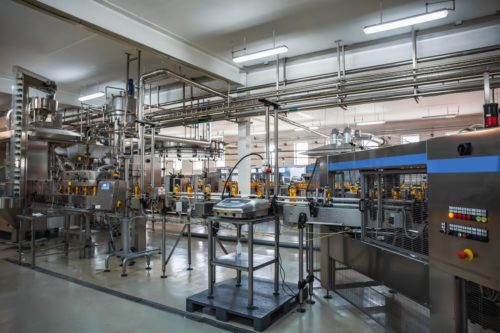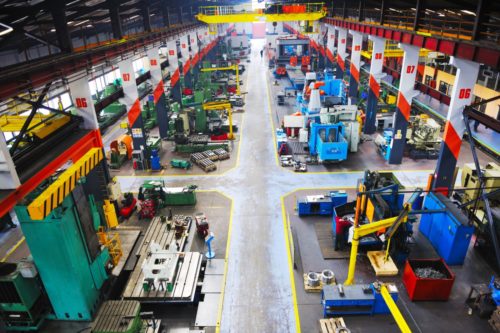What is Outsourcing?
Outsourcing is the practice of hiring a third party or separate company to assist with the engineering, designing, and building of a subassembly on your behalf, freeing up your internal resources and staff to work on aspects of a project for which they may be better skilled or equipped.
 Would an outsourcing arrangement work for you? The answer to that question is YES if you have ever experienced an overage in labor costs or a delay in production due to the in-house manufacturing of subassemblies. However, every situation is unique, and the information below will help you learn more about when and whether outsourcing is the right choice.
Would an outsourcing arrangement work for you? The answer to that question is YES if you have ever experienced an overage in labor costs or a delay in production due to the in-house manufacturing of subassemblies. However, every situation is unique, and the information below will help you learn more about when and whether outsourcing is the right choice.
Your first go-to solution may be to identify areas to cut back on when facing a budget crunch. It sounds like a simple solution, but the reality is that it’s challenging to decide where to cut without putting unnecessary pressure on your team while still maintaining your competitive edge.
For example, you can eliminate headcount, which, of course, is an unpleasant experience in and of itself. But doing so can be harder on the staff you decide to keep. During a typical layoff, not only is the retained staff burdened with the guilt of keeping their job, but they’re also responsible for covering the labor that would have been performed by those who were let go.
You can also consider reducing energy costs by shortening the workday; but again, doing so often results in extra pressure on the staff to increase their overall output by producing the same work product in fewer hours.
Another option is to reduce material costs, but a reduction in material costs could harm the quality of the end product, which is never the solution for a top-shelf producer.
And so, while anything you do to save even a small handful of pennies on the dollar can significantly impact your bottom line, solutions that have the least impact on product quality and employee morale are usually the best to implement.
Streamline Your Production Process Through Outsourcing
Outsourcing the manufacturing of your subassemblies may seem like an expensive choice to streamline production. Still, it’s one of the easiest and cost-efficient strategies to up your game.
Streamlining, regardless of the methods chosen, almost always involves an upfront financial investment of some sort. But, in all likelihood, it will be an investment that will pay off later.
Having a reputation for working more efficiently, after all, can give you a much stronger edge against your competitors. Faster completion of production runs and an improved reputation for on-time delivery very well may lead to bigger and more profitable customers.
In fact, many manufacturers find outsourcing to be both an economical and viable solution. While some manufacturers will choose to struggle with their subassemblies’ production, others consider outsourcing to be their go-to strategy for maintaining their edge over the competition.
Here’s What We Have Found Through the Years

For example, subassembly production often means dealing with multiple suppliers to find the correct parts and materials. Aside from it being another logistical headache, the difficulty in procuring parts means there’s a chance you’ll fall behind while you wait on deliveries. Something as small as a subassembly manufacturing delay can cascade into a much larger problem that could go so far as to derail the scheduling and planning for the overall project.
Outsourcing removes that worry. Once your subassembly project’s details are communicated to your outsource partner, your partner will complete the entire subassembly. They will handle the parts procurement as well, allowing you to focus on the bigger picture and remain confident that the finished subassembly will be completed on or ahead of schedule.
When outsourcing, you have one point of contact — your outsource partner. You will no longer have to juggle multiple contacts and engage in countless follow-ups to ensure parts and materials arrive on time.
Does it Cost Money or Save Money?
In-house subassembly production is often a costly endeavor. The manufacturing company would essentially have to create multiple assembly lines, and often these smaller components are labor-intensive by design. Additionally, one-off projects such as these usually come with their fair share of scope creep. Unforeseen circumstances can often lead to severe profit leaks and a significant drain on labor expenses.
However, when you outsource your subassemblies, no longer will unforeseen labor expenses creep into your project’s scope. Gone will be the line-item budgeting details that go into planning for subassembly production. Your outsource partner will be much more adept at pricing subassembly production, and they’ll total the cost of each part of the project into one single bill.
The entire job, its price, and the delivery terms are determined upfront, so there are no added surprises down the road. A third-party manufacturer—someone who can stock and assemble the parts faster and less expensively — will know what it takes to get the job done and will get it done for the agreed-upon price in the agreed-upon timeframe.
Furthermore, your outsource partner will build subassemblies much faster than you would likely be able to in-house. Your outsource partner becomes a trusted extension of your existing manufacturing capacity.
The time management, equipment, procuring of parts, staffing, training, and anything else associated with subassembly production are all taken off your plate and handled elsewhere. If demand increases, outsourcing removes the worry of having to scale up your manufacturing capacity. The extra demand will be taken care of for you.
Distractions Can be Costly, Too!
While there may be some good reasons to keep subassemblies in house, our customers have found that doing so ultimately results in an unnecessary distraction from the completed end product.
For example, a project with multiple subassemblies requires the details of each to be carefully reviewed and communicated to workers before manufacturing begins. This review again must take place during quality assurance after the subassemblies have been created. Multiple subassemblies can often lead to various issues arising. When the production of a subassembly encounters a problem, it can significantly affect the production of the rest of the project.
Any such problem that needs to be resolved will undoubtedly shift your team’s attention away from the end product and onto the subassembly issue. Some team members, probably your best team members, will get siphoned away from the larger project to resolve the problems encountered with the subassembly, and the headcount you planned to devote to the main project gets reduced. This situation often results in lost time, cost overages, missed deadlines, and a possible reduction in overall product quality.
Outsourcing the subassembly work allows your workers to focus on the aspects of the project for which they were hired and trained, and with which they are most familiar and skilled.
When you have an outsource partner who can handle multiple subassembly projects at scale, you can rest assured the subassemblies are getting the appropriate attention while your final product is as well.
Outsourcing to U.S.-based Companies vs. Overseas
When selecting an outsource partner, you will be faced with choosing between an overseas company and a U.S.-based company. Let’s examine the two:

